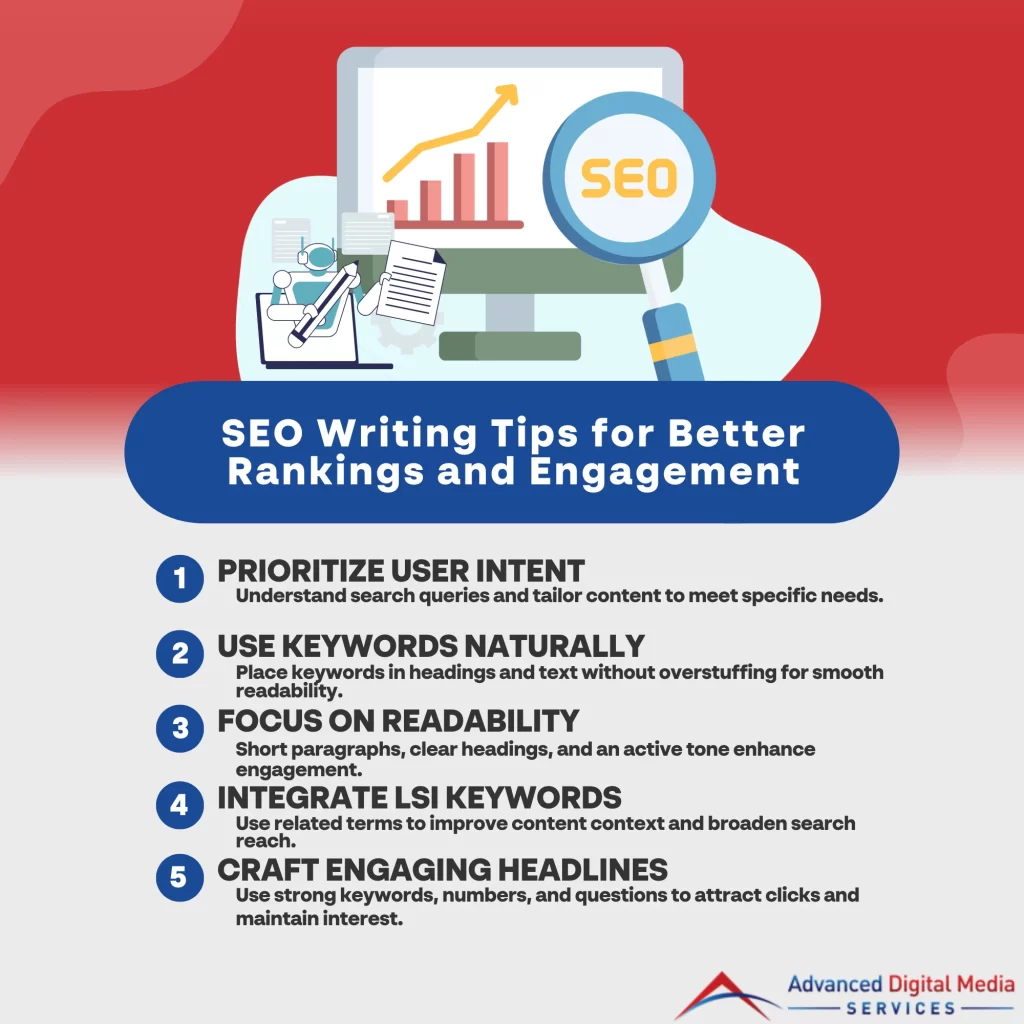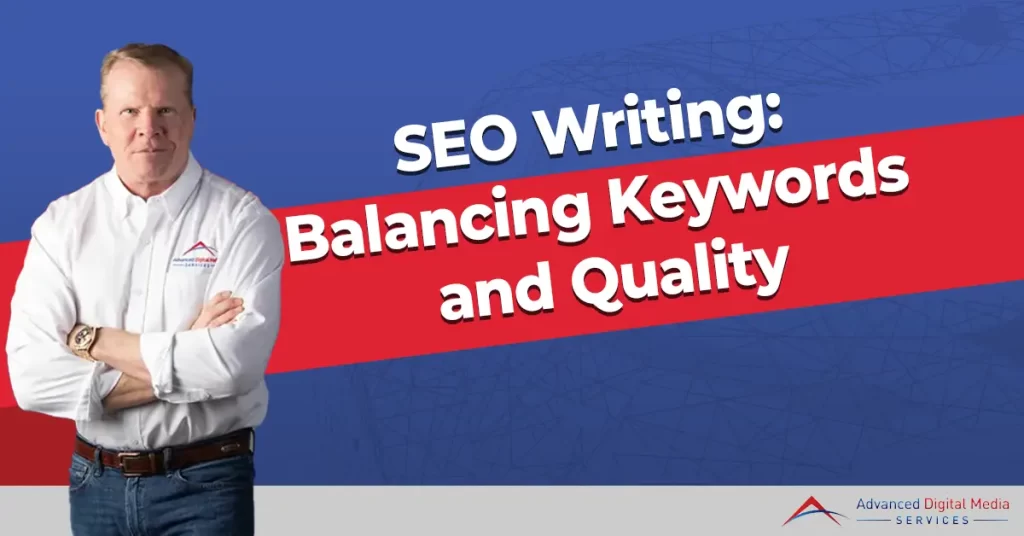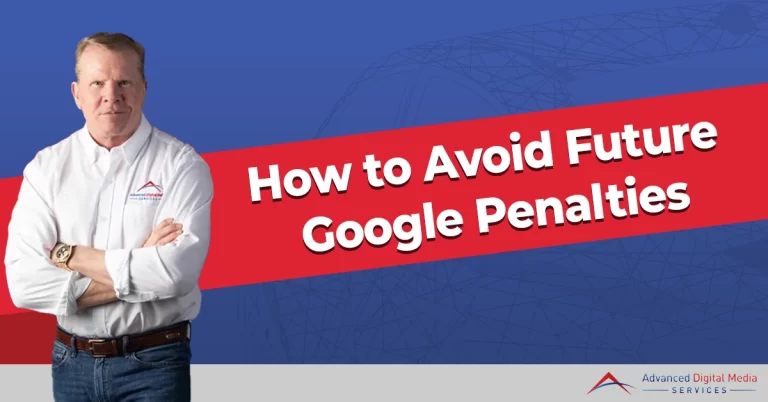In SEO writing, you need to balance keywords with quality to truly connect with your audience. Start by prioritizing user intent, tailoring your content to meet their specific needs. Use keywords naturally—avoid stuffing to maintain a smooth flow. Focus on readability with short paragraphs and clear headings to enhance engagement. Integrate LSI keywords to enrich context and broaden reach, while ensuring that they blend seamlessly into the narrative. Craft engaging headlines that capture attention and incorporate relevant keywords. Get this balance right, and you’ll create content that not only ranks but resonates. Keep exploring to uncover more strategies!

Key Takeaways
- Prioritize user intent by understanding your audience’s search queries to create relevant and engaging content.
- Use keywords naturally throughout the text, avoiding over-stuffing to maintain a smooth reading experience.
- Focus on readability with short paragraphs and clear headings to enhance content flow and engagement.
- Integrate LSI keywords to provide context and improve search rankings without disrupting the narrative.
- Craft engaging headlines that capture attention while incorporating relevant keywords for better visibility in search results.
Prioritize User Intent
When crafting SEO content, prioritizing user intent is essential for your success. Understanding what your audience is searching for allows you to tailor your SEO content writing effectively. When writing for SEO, it’s not just about inserting keywords; it’s about addressing the specific needs and questions of your users. This means analyzing search queries and aligning your content to offer valuable answers. By focusing on user intent, you can create engaging, relevant content that resonates with your audience and encourages them to stay on your page. Ultimately, this approach not only improves your SEO rankings but also fosters trust and loyalty among your readers. Embrace user intent, and watch your content strategy flourish.
Use Keywords Naturally
Focusing on user intent paves the way for effectively integrating keywords into your content. When you’re writing content for SEO, it’s essential to weave keywords naturally into your narrative. Over-stuffing keywords can lead to awkward phrasing and ultimately disengage your readers. Instead, aim for a conversational tone that resonates with your audience while still fulfilling SEO requirements. This means placing keywords in strategic locations—like headings and the introduction—without compromising the flow of your writing. Remember, SEO content writing isn’t just about the keywords; it’s about creating valuable, engaging content that answers users’ queries. By balancing natural language with targeted keywords, you’ll enhance both your search engine visibility and reader satisfaction, leading to better engagement and conversions.
Focus on Readability
How can you guarantee your content is both engaging and easy to read? In the domain of SEO content writing, readability is essential. You want your audience to absorb your message without struggling through jargon or complex sentences. Using short paragraphs, bullet points, and clear headings enhances the flow of your content. Remember, content writing for SEO isn’t just about stuffing keywords; it’s about crafting a narrative that resonates with your readers. Active voice and conversational tone can make your writing approachable, keeping readers engaged. Don’t forget to take into account your audience’s reading level and preferences. When your content is easy to read, you increase the chances of shares and interactions, ultimately boosting your SEO efforts.
Integrate LSI Keywords
Incorporating LSI (Latent Semantic Indexing) keywords can greatly enhance your SEO writing, as it helps search engines understand the context of your content better. When you’re crafting your SEO content writing or SEO blog writing, think about the related terms and phrases that users might search for. By integrating these LSI keywords, you not only enrich your content but also improve your chances of ranking higher in search results. This approach makes your writing more relevant and informative, creating a better experience for your readers. Plus, well-placed LSI keywords can increase your content’s visibility, allowing you to capture a broader audience while maintaining a natural flow in your writing. Embrace this strategy for effective SEO results.
Avoid Keyword Stuffing
While integrating LSI keywords can enhance your SEO efforts, it’s equally important to steer clear of keyword stuffing. Overloading your content with keywords might seem like a quick fix for better rankings, but it can backfire. Search engines prioritize quality, and excessive keyword use makes your writing feel unnatural and less engaging. Remember, when you’re writing SEO content, the goal is to provide value to your readers. Focus on creating informative, well-structured content that flows naturally. By balancing your keywords and ensuring they fit seamlessly within your text, you’ll not only improve readability but also enhance your SEO content writing strategy. Ultimately, the quality of your content will lead to better user engagement and improved search engine rankings.
Craft Engaging Headlines
Crafting engaging headlines is essential for capturing your audience’s attention, especially since they’re often the first impression potential readers have of your content. A well-structured headline can greatly boost your visibility in search results, making it a vital element in effective SEO article writing. You want to incorporate relevant keywords naturally while maintaining clarity and intrigue. Think about what your target audience is searching for and tailor your headlines accordingly. If you’re working with an SEO content writing company, they can provide insights on trending phrases and keyword strategies. Use numbers, strong adjectives, and questions to draw readers in. Remember, an engaging headline not only attracts clicks but also sets the tone for the quality of content that follows.
Frequently Asked Questions
How Can I Measure the Effectiveness of My SEO Writing?
You can measure your SEO writing’s effectiveness by tracking organic traffic, keyword rankings, engagement metrics, and conversion rates. Regularly analyzing these data points helps you refine strategies and enhance overall content performance for better results.
What Tools Help in Finding the Right Keywords for My Content?
“Measure twice, cut once.” To find the right keywords, use tools like Google Keyword Planner, SEMrush, and Ahrefs. They’ll help you analyze search volume and competition, ensuring your content hits the mark effectively.
How Often Should I Update My SEO Content?
You should update your SEO content regularly, ideally every three to six months. This keeps your information fresh, aligns with search engine algorithms, and maintains your rankings while engaging your audience effectively. Consistency matters!
Can Images and Videos Improve My SEO Rankings?
Imagine a garden; vibrant images and videos are the colorful flowers attracting bees. Just like that, they enhance your SEO rankings by increasing engagement, reducing bounce rates, and improving visibility—essential for thriving in search engine results.
What Are Common SEO Writing Mistakes to Avoid?
You shouldn’t ignore keyword relevance, overstuff your content, or neglect readability. Avoid using generic titles, failing to optimize meta descriptions, and skipping internal links. These common mistakes can hinder your SEO effectiveness and overall visibility.
Conclusion
Mastering SEO writing requires a delicate balance between keyword integration and high-quality content that engages readers. By prioritizing user intent, using keywords naturally, and maintaining readability, you can create content that both ranks well and resonates with your audience. Avoid keyword stuffing, leverage LSI keywords, and craft engaging headlines to enhance visibility and drive organic traffic. Whether you’re working with an SEO content writing company or handling your own SEO blog writing, applying these techniques will ensure consistent performance and long-term success. Keep refining your strategies, stay updated with SEO trends, and continue creating content that connects, informs, and converts.






